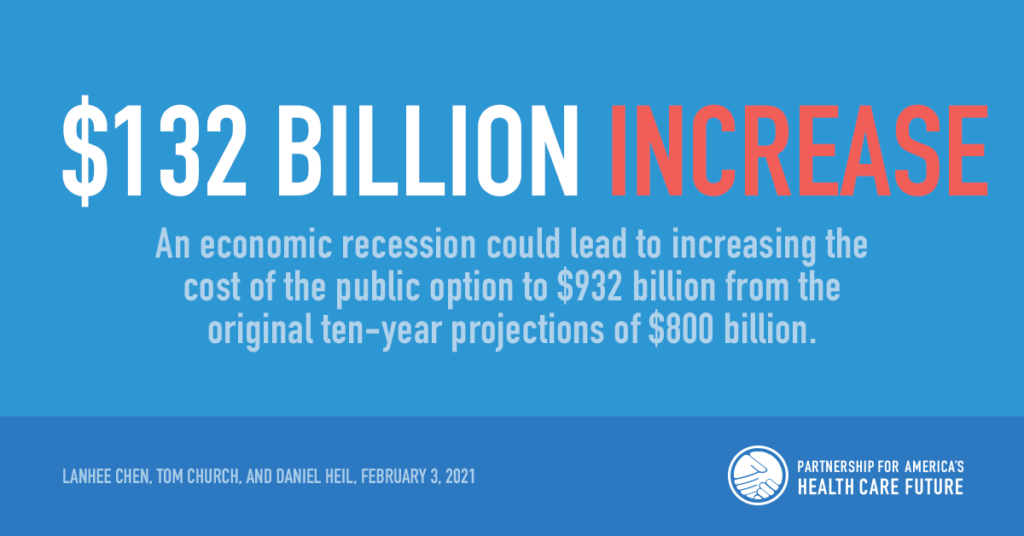A new study released by Lanhee J. Chen, Ph.D., Tom Church and Daniel L. Heil, with support from the Partnership for America’s Health Care Future, finds that the cost of a new government-controlled health insurance system like the public option could increase when the economy is at its worst. In fact, in the event of an economic recession, the long-term cost of the new government health insurance system could balloon by an additional $1.4 trillion, placing an even greater financial burden on working families.


According to the study, the consequences of politically realistic responses to an economic shock such as a recession could exacerbate the costs of the public option. For example, freezing premiums during a recession could increase the 2050 debt burden. “To avoid this debt increase, Congress would need to raise taxes,” and as a result, “if the public option were financed similarly to Medicare Part A, middle-income tax filers would see their taxes rise by an inflation-adjusted total of $2,833 in 2050.”
THE FACTS:
The public option could be more expensive for working families than originally projected during economic recessions. In the first ten years after its enactment, the federal deficit could grow by $932 billion if unemployment relief is needed during a recession — a $132 billion increase from original projections. As a result, politicians could be forced to either raise taxes on working families or increase the federal debt to pay for a new government-controlled health insurance system.
THE TRUTH:
During critical times, let’s build on what’s working where private coverage, Medicare and Medicaid work together to help American families get healthy and stay healthy, not start over with a new government-controlled health insurance system like the public option.